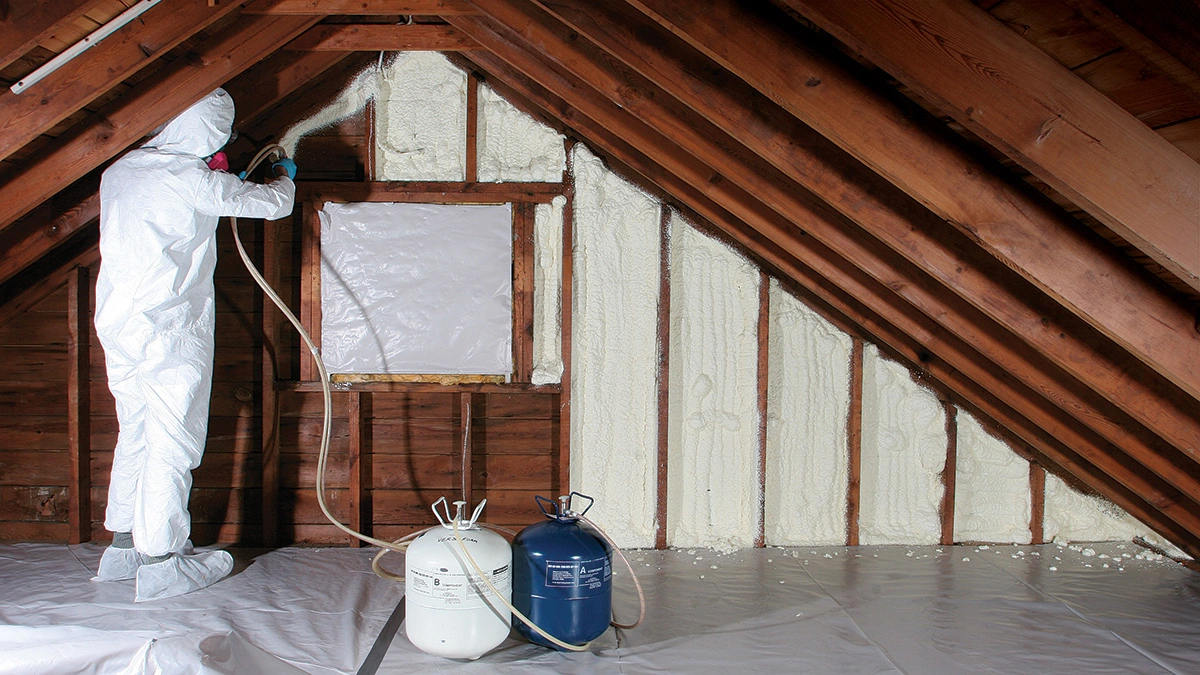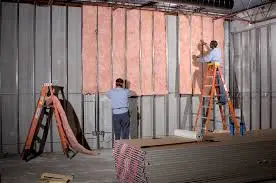
Hidden Treasures: Discoveries in the Batt insulation
Batt insulation keeps homes warm in the winter and cool in the summer. It's made of fiberglass or mineral wool and comes in pre-cut panels or rolls that fit snugly between the studs in walls, floors, and ceilings. This insulation is popular because it's easy to install and effective at trapping heat.
Without good insulation, heating and cooling systems have to work much harder, which uses more energy and costs more money. Good insulation also helps reduce noise from outside, making homes quieter and more peaceful.
The idea of "hidden treasures" in batt insulation refers to the unseen benefits beyond temperature control. These hidden treasures include improved energy efficiency, better air quality, and increased property value. Additionally, well-insulated homes are better for the environment, requiring less energy to heat and cool.
Batt insulation is a simple yet powerful tool in modern construction. It helps maintain a comfortable indoor climate and offers hidden benefits like energy savings and improved air quality. By understanding and using these hidden treasures, homeowners can make more intelligent, sustainable home choices.
What is Batt Insulation?
Common Materials Used
Batt insulation is commonly made from three primary materials:
1. Fiberglass: This is the most widely used material for batt insulation. It consists of fine glass fibers that trap air, making it an excellent insulator.
2. Mineral Wool: Also known as rock wool or stone wool, mineral wool is insulation made from volcanic rock or industrial slag. It is highly resistant to fire and provides good soundproofing qualities. It also effectively maintains its insulating properties even when wet.
3. Cotton: Cotton batt insulation is made from recycled cotton fibers, often from denim. It's a sustainable option that provides good thermal and acoustic insulation. Cotton insulation is treated with boric acid to make it fire-resistant and to prevent mold growth.

Typical Applications and Uses
Batt insulation is used in both residential and commercial buildings. In homes, it is commonly installed in walls, attics, basements, and crawl spaces to help regulate indoor temperatures and improve energy efficiency. In commercial buildings, batt insulation is used in office spaces, warehouses, and industrial facilities to provide thermal insulation and soundproofing.
In summary, batt insulation is a practical and versatile material that improves building energy efficiency and comfort. It is crucial in modern construction, whether made from fiberglass, mineral wool, or cotton.
The Benefits of Batt Insulation
Thermal Efficiency and Energy Savings
It helps reduce the heat that escapes or enters your home, so your heating and cooling systems don't have to work as hard. Using batt insulation, you can make your home more energy-efficient and eco-friendly.
Soundproofing Qualities
One of the hidden benefits of batt insulation is its ability to reduce noise. It helps block out unwanted sounds from outside and between rooms inside your home. This is especially useful in busy neighborhoods or multi-story buildings where noise can be problematic. With batt insulation, you can enjoy a quieter, more peaceful living environment.
Fire Resistance
Batt insulation materials like fiberglass and mineral wool are naturally fire-resistant. In a fire, these materials can help slow the spread of flames, giving you more time to escape and firefighters more time to respond. This makes batt insulation a smart choice for improving your home's fire safety.
Ease of Installation and Cost-Effectiveness
Installing batt insulation is relatively easy and cost-effective. The pre-cut panels or rolls fit easily between studs and joists, making the installation straightforward. You can even install it yourself if you're handy with tools. Because batt insulation is widely available and affordable, it's an excellent option for homeowners looking to improve their insulation without breaking the bank.
Batt insulation offers numerous benefits, including thermal efficiency, soundproofing, fire resistance, and ease of installation. It's an effective and economical choice for anyone looking to enhance their home's comfort and safety.
Hidden Treasures in Batt Insulation
Energy Efficiency Improvements
Batt insulation has made great strides in energy efficiency. Newer materials and advanced manufacturing techniques have improved how well insulation blocks heat transfer, leading to better energy savings and lower utility bills.
Advances in Material Technology
Recent advances in material technology have led to better-performing insulation. Modern batt insulation uses high-tech fibers with superior thermal resistance, making homes more comfortable year-round.
Health and Safety Innovations
Today's batt insulation is designed with health and safety in mind. Many products are non-toxic and free from harmful chemicals, making them safer for installers and residents.
Non-toxic and Eco-friendly Materials
Modern batt insulation often uses non-toxic, eco-friendly materials. These materials are better for the environment and improve indoor air quality, so homeowners can feel good about choosing safe and sustainable products.
Improvements in Fire Retardancy
Batt insulation has also seen improvements in fire retardancy. Enhanced fire-resistant properties help protect homes in case of a fire, providing extra peace of mind.
Contribution to Green Building Certifications
Using batt insulation with recycled content can contribute to green building certifications like LEED. These certifications recognize buildings that are environmentally friendly and energy-efficient.
Installation Advancements
Installing batt insulation is easier than ever with pre-cut sizes and shapes designed for specific applications. This makes the installation process faster and more efficient.
Integration with Other Building Systems
This integration helps maximize energy efficiency and overall building performance.
Batt insulation's hidden treasures include energy efficiency improvements, advanced materials, higher R-values, health and safety innovations, sustainability, and easier installation. These benefits make batt insulation a smart choice for modern construction.
Case Studies: Real-World Applications
Residential Building Retrofits
One example of batt insulation's effectiveness is a home in Denver, Colorado. The homeowners wanted to improve their 1960s house's energy efficiency. By installing high-R-value fiberglass batt insulation in the walls and attic, they saw a significant reduction in their energy bills. Their home became warmer in the winter and cooler in the summer, showing how batt insulation can enhance comfort and savings in older homes.
Commercial Building Efficiency Upgrades
Another great example is a commercial building in Seattle, Washington. The owners wanted to cut energy costs and improve their building's environmental footprint. They chose mineral wool batt insulation for its fire-resistant properties and excellent thermal performance. After installation, the building's energy consumption dropped by 30%. The improved insulation also reduced noise, making the work environment more pleasant for employees.
Success Stories Showcasing Energy Savings and Improved Comfort
In Austin, Texas, a family decided to retrofit their home with eco-friendly cotton batt insulation made from recycled denim. This choice helped reduce their carbon footprint and improved indoor air quality. After the retrofit, their energy bills were 25% lower, and they noticed a significant reduction in outside noise. The family was thrilled with the improved comfort and energy savings.
Similarly, a school in Chicago, Illinois, used batt insulation for a significant renovation project. The goal was to create a better learning environment and reduce energy costs. The school achieved both objectives by adding batt insulation to the walls and ceilings. Energy costs dropped, and students and teachers enjoyed a quieter, more comfortable space.
These real-world case studies highlight how batt insulation can transform residential and commercial buildings. The benefits are clear and substantial, from energy savings to improved comfort.
Common Challenges and Solutions
Proper Installation Techniques
Proper installation is critical to ensuring batt insulation works effectively. Gaps and compression can significantly reduce insulation performance. To avoid gaps:
Carefully measure and cut the batt insulation to fit snugly between studs and joists.
Ensure the insulation fully expands to its intended thickness, as compressed insulation can lose its insulating properties.
Take your time during installation to ensure every piece is placed correctly, and there are no spaces where air can leak through.
Addressing Thermal Bridging Issues
Thermal bridging occurs when heat travels through materials that are poor insulators, like metal studs or wooden beams, bypassing the insulation. To address this, use continuous insulation layers over studs and beams. Installing rigid foam insulation or using insulated sheathing can help minimize thermal bridging. Additionally, consider using advanced framing techniques to reduce the number of thermal bridges in your walls.
batt insulation has challenges but can be effectively managed with proper techniques and materials. By addressing moisture and mold, ensuring correct installation, and dealing with thermal bridging, you can maximize the benefits of your insulation and keep your home comfortable and energy-efficient.
Future Trends in Batt Insulation
Emerging Materials and Technologies
The future of batt insulation looks promising, especially with emerging materials and technologies. New insulation materials are being developed to improve thermal performance and sustainability. For example, aerogels, which are lightweight and highly effective insulators, are being incorporated into batt insulation. Bio-based materials, such as those made from agricultural waste, are gaining popularity for their eco-friendly and insulating properties.
Smart Insulation Systems
Innovative insulation systems are another exciting trend. These systems use advanced sensors and IoT technology to monitor and manage real-time insulation performance. For instance, innovative insulation can adjust thermal properties based on external temperatures, optimizing energy efficiency.
Industry forecasts predict that the global insulation market will continue to expand, with batt insulation playing a significant role. Regulations and building codes are also becoming stricter, requiring higher energy efficiency standards, which will drive the adoption of advanced insulation solutions.
The future of batt insulation is bright, with emerging materials and intelligent technologies leading the way. Market trends and industry forecasts show a growing demand for better, more sustainable insulation options. These advancements promise to make homes and buildings more energy-efficient and comfortable.
Conclusion
Batt insulation is a versatile and practical material used in residential and commercial buildings. It offers numerous benefits, including thermal efficiency, soundproofing, and fire resistance. Advances in materials and technology have improved batt insulation's performance, making it a smart choice for modern construction. Proper installation and addressing common challenges like moisture and thermal bridging can also maximize its benefits.
Staying informed about the latest advancements in insulation is crucial for homeowners and builders alike. Emerging materials, intelligent insulation systems, and new installation techniques can significantly enhance the performance of batt insulation. By keeping up with these developments, you can ensure that your insulation provides the best possible energy efficiency, comfort, and safety.
Batt insulation remains a reliable and innovative solution for modern buildings. You can make the most of this valuable insulation option by understanding its benefits, addressing common challenges, and staying informed about new developments. Consider batt insulation for your upcoming projects to enjoy energy savings, improved comfort, and a safer, more sustainable building.
Understanding the basics and addressing common concerns can help maximize batt insulation in your home. If you have more specific questions, consult us; we are insulation experts and can provide additional guidance.
Reach Out To Spray Foam Insulation Westminster
Delivering Quality Insulation Solutions in Westminster, Colorado
Call us today!